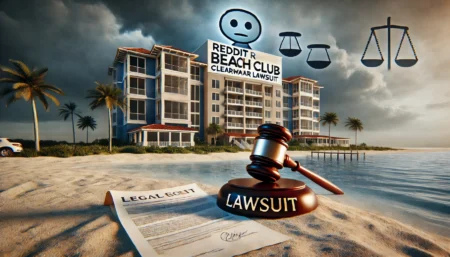In this article, we are providing all the information about the Clovis Asbestos Legal Question. As you navigate the intricate web of legal complexities surrounding the Clovis asbestos case, it becomes imperative to delve into the heart of the matter with a keen eye for detail and a quest for understanding. The story of Clovis and its battle with asbestos is not just another legal saga; it is a poignant reminder of the far-reaching implications of environmental hazards on our communities.
In this article, we embark on a journey to unravel the layers of this case, shedding light on the critical questions that have emerged in its wake. From the initial discovery of asbestos in Clovis to the potential health risks posed by this toxic substance, we aim to provide you with a comprehensive overview that will empower you to grasp the gravity of the situation at hand. So, join me as we embark on this exploration into the heart of the Clovis asbestos legal question – an exploration that promises to enlighten and inform every step of the way.
A. Brief background on the Clovis asbestos case
In understanding the Clovis asbestos case, it is crucial to delve into its origins. The issue came to light when residents and workers in Clovis, a small town in California, started reporting health concerns that seemed to be linked to asbestos exposure. Investigations revealed that several buildings and structures in the area contained asbestos materials, posing a significant risk to the community’s health and safety.
As the situation unfolded, it became evident that there was a lack of proper oversight and regulation regarding asbestos handling and disposal in Clovis. This negligence led to widespread exposure among residents and workers, sparking concerns about potential long-term health consequences. The Clovis asbestos case serves as a stark reminder of the importance of stringent regulations and proactive measures to prevent such hazardous exposures in our communities.
B. Overview of the legal questions surrounding the Clovis asbestos situation
The legal questions surrounding the Clovis asbestos situation are complex and multifaceted, raising concerns about liability, accountability, and justice for those affected. One of the primary legal issues at hand is determining responsibility for the presence of asbestos in Clovis. This involves investigating who knew about the asbestos contamination when they knew it, and what actions were taken or not taken to address the problem. Additionally, there are questions regarding potential negligence on the part of property owners, contractors, or other parties involved in activities that may have led to asbestos exposure.
Furthermore, legal challenges arise concerning compensation for individuals who have suffered harm due to asbestos exposure in Clovis. Determining the extent of damages, including medical expenses, lost wages, pain and suffering, and other related costs can be contentious. The legal system must grapple with how to fairly compensate victims while holding responsible parties accountable for their actions or inactions. Overall, navigating the legal landscape surrounding the Clovis asbestos situation requires a thorough understanding of environmental regulations, personal injury law, and the complexities of proving causation and liability in cases involving toxic substances like asbestos.
I. What are Clovis Asbestos Legal Questions
Clovis Asbestos Legal Question entails being aware of the intricate legal concerns concerning asbestos exposure and the health consequences that follow. The following are ten frequently asked questions concerning the Clovis Asbestos lawsuit and the responses to them:
Question: What legal recourse do individuals in Clovis have if they’ve been exposed to asbestos?
Answer: Individuals in Clovis who have been exposed to asbestos can explore legal avenues such as filing lawsuits to seek compensation for damages.
Question: How prevalent is asbestos exposure in Clovis, and what are its health implications?
Answer: Asbestos exposure in Clovis can occur in various settings like construction sites or older buildings. Health risks include mesothelioma, lung cancer, and asbestosis.
Question: Are there law firms in Clovis specializing in asbestos-related cases?
Answer: Yes, Clovis has law firms specializing in asbestos-related cases, staffed with lawyers experienced in handling such complex litigation.
Question: What factors contribute to the success of an asbestos-related legal case in Clovis?
Answer: The success of an asbestos-related legal case in Clovis depends on factors such as evidence of exposure, medical documentation, and the expertise of legal representation.
Question: How long does it typically take to resolve an asbestos-related legal case in Clovis?
Answer: The timeline for resolving an asbestos-related legal case in Clovis varies based on factors such as case complexity, court procedures, and negotiations, often spanning several months to years.
Question: Can family members of asbestos victims pursue legal action in Clovis?
Answer: Yes, family members of asbestos victims in Clovis may have grounds to pursue legal action through wrongful death claims or by continuing existing legal actions on behalf of the deceased.
Question: What types of compensation can individuals affected by asbestos exposure in Clovis seek through legal action?
Answer: Through legal action, individuals affected by asbestos exposure in Clovis can seek compensation for medical expenses, lost wages, pain and suffering, and other related damages.
Question: What is the statute of limitations for filing an asbestos-related lawsuit in Clovis?
Answer: The statute of limitations for filing an asbestos-related lawsuit in Clovis varies, typically ranging from one to several years from the time of diagnosis or discovery of exposure.
Question: Are alternative dispute resolution methods available for asbestos-related cases in Clovis?
Answer: Yes, alternative dispute resolution methods like mediation or arbitration may be available for resolving asbestos-related cases in Clovis, offering alternatives to lengthy court battles.
Question: How can individuals in Clovis determine if they have a viable asbestos-related legal case?
Answer: Individuals in Clovis can determine the viability of their asbestos-related legal case by consulting with experienced asbestos lawyers who can evaluate their situation, assess liability, and provide legal guidance.
The Presence of Asbestos in Clovis
In recent years, the presence of asbestos in Clovis has raised significant concerns among residents and authorities alike. The discovery of asbestos in this community came to light during routine inspections of older buildings and infrastructure projects. Asbestos, a naturally occurring mineral known for its heat resistance and durability, was once widely used in construction materials such as insulation, tiles, and roofing. However, when disturbed or damaged, asbestos fibers can become airborne and pose serious health risks to those exposed.
The potential health risks associated with asbestos exposure are a major cause for alarm in Clovis. Inhalation of asbestos fibers can lead to serious respiratory conditions like asbestosis, lung cancer, and mesothelioma. These diseases often have long latency periods, meaning symptoms may not manifest until years after initial exposure. As a result, the presence of asbestos in Clovis has sparked discussions about the importance of proper handling and removal procedures to safeguard public health and prevent further exposure risks.
A. Explanation of how asbestos was discovered in Clovis
Asbestos was discovered in Clovis through routine testing and inspections conducted by environmental agencies. In recent years, concerns arose regarding the presence of asbestos in various buildings and structures within the city. As part of these investigations, samples were collected from different locations in Clovis, including residential areas, schools, and commercial buildings. The analysis of these samples revealed the presence of asbestos fibers in the air and materials such as insulation, tiles, and roofing.
The discovery of asbestos in Clovis has raised significant concerns among residents and authorities alike due to the potential health risks associated with exposure to this hazardous mineral. Asbestos is known to cause serious respiratory conditions such as mesothelioma, lung cancer, and asbestosis when its fibers are inhaled or ingested over an extended period. The identification of asbestos in Clovis has prompted a closer examination of building materials and infrastructure to ensure proper mitigation measures are implemented to protect public health and safety.
B. Discussion on the potential health risks associated with asbestos exposure
As we delve into the potential health risks associated with asbestos exposure in Clovis, it is crucial to understand the serious implications this toxic mineral can have on human health. When asbestos fibers are disturbed and become airborne, they can easily be inhaled or ingested, leading to a range of health issues. Prolonged exposure to asbestos has been linked to serious respiratory conditions such as asbestosis, lung cancer, and mesothelioma.
What makes asbestos particularly dangerous is its ability to remain dormant in the body for years before symptoms manifest, making early detection and prevention challenging. The microscopic fibers of asbestos can cause scarring of lung tissue over time, impairing respiratory function and increasing the risk of developing life-threatening illnesses. It is imperative for individuals in Clovis and beyond to be aware of the potential health risks associated with asbestos exposure and take necessary precautions to protect themselves and their family members from this hidden but lethal danger.
C. Overview of the affected areas in Clovis
Clovis, a city in California’s Central Valley, has been grappling with asbestos-related concerns that have raised alarms among residents and authorities alike. The affected areas in Clovis primarily include older buildings, homes, and industrial sites constructed before the dangers of asbestos were widely known. These structures may contain asbestos-containing materials such as insulation, roofing materials, floor tiles, and pipes.
The presence of asbestos in these aging structures poses a significant health risk to individuals who may come into contact with or disturb these materials. Asbestos exposure can occur through activities like renovation, demolition, or even routine maintenance work in these properties. Given the potential health hazards associated with asbestos exposure, it is crucial for residents and workers in Clovis to be aware of the affected areas and take necessary precautions to mitigate the risks posed by this toxic substance.
III. Legal Implications and Challenges
As we delve into the legal implications surrounding the asbestos issue in Clovis, it becomes evident that there are complex challenges at play. Property owners and local authorities hold significant legal responsibilities when it comes to ensuring the safety of residents and workers from asbestos exposure. Failure to address this issue can lead to serious consequences, including potential lawsuits and liability issues.
Proving asbestos exposure and its related health effects can be a daunting task due to the latency period between exposure and manifestation of diseases such as mesothelioma. This poses a challenge for individuals seeking compensation for their suffering. Additionally, navigating the legal landscape surrounding asbestos regulations and compliance adds another layer of complexity to the situation. Despite these challenges, it is crucial for affected individuals to seek legal guidance and explore their options for holding accountable those responsible for their exposure to asbestos in Clovis.
A. Analysis of the legal responsibilities of property owners and local authorities
When it comes to the legal responsibilities of property owners and local authorities in Clovis regarding asbestos exposure, there are crucial considerations that must be addressed. Property owners have a duty to maintain safe premises for residents and visitors, which includes identifying and mitigating any potential asbestos hazards. If you don’t, there may be major health dangers and legal repercussions. Local authorities play a significant role in regulating and enforcing laws related to asbestos handling and disposal to protect public health.
Property owners need to conduct thorough inspections to identify any presence of asbestos-containing materials within their buildings. If asbestos is found, proper abatement measures must be taken promptly to ensure the safety of occupants. Local authorities are responsible for overseeing compliance with regulations, issuing permits for asbestos removal projects, and monitoring the proper disposal of hazardous materials. Collaboration between property owners and local authorities is essential to prevent exposure and uphold legal obligations surrounding asbestos in Clovis.
B. Discussion on potential lawsuits and liability issues
When it comes to potential lawsuits and liability issues surrounding asbestos exposure in Clovis, there are several key factors to consider. Individuals who have been exposed to asbestos and subsequently developed health issues may have legal grounds to file lawsuits against responsible parties, such as property owners, construction companies, or manufacturers of asbestos-containing products. These lawsuits can seek compensation for medical expenses, lost wages, pain and suffering, and other damages resulting from the exposure.
Proving liability in asbestos cases can be complex due to the long latency period between exposure and the onset of related health conditions. Additionally, identifying the exact source of asbestos exposure can be challenging, especially in cases where multiple parties may have contributed to the exposure. However, with the help of experienced legal professionals specializing in asbestos litigation, affected individuals can navigate these complexities and pursue justice for their injuries.
C. Examination of the challenges in proving asbestos exposure and related health issues
Proving asbestos exposure and its related health issues can be a complex and challenging process. One of the main difficulties lies in establishing a direct link between exposure to asbestos and the development of specific health conditions, such as mesothelioma or lung cancer. Asbestos-related diseases often have long latency periods, meaning symptoms may not manifest until years or even decades after initial exposure. This delay in onset can make it difficult to pinpoint the exact source of exposure, especially in cases where individuals have worked in multiple environments with potential asbestos exposure.
Furthermore, proving liability in asbestos cases can be complicated due to the widespread use of asbestos-containing materials in various industries over the past century. Identifying responsible parties, such as property owners, manufacturers, or employers, requires thorough investigation and documentation of historical records. Additionally, gathering sufficient evidence to support claims of negligence or failure to provide a safe working environment adds another layer of complexity to these legal battles. Overall, navigating the challenges of proving asbestos exposure and related health issues requires expertise in both medical science and legal proceedings to ensure that victims receive proper compensation for their suffering.
IV. Current Status and Future Outlook
As of the latest developments in the Clovis asbestos case, the legal proceedings have been progressing steadily but with some complexities. Various parties involved, including the plaintiffs, defendants, and legal representatives, have been diligently presenting their arguments and evidence to support their respective positions. The court has been meticulously reviewing all aspects of the case to ensure a fair and just resolution for all those affected by the asbestos exposure in Clovis.
Looking ahead, the future outlook for the Clovis asbestos case remains uncertain yet hopeful. While there are challenges to navigate and complexities to address, there is also a sense of determination and perseverance among those seeking justice and accountability. As we anticipate further hearings, testimonies, and deliberations in the coming months, it is crucial to stay informed and engaged with updates on this important legal matter that impacts not only the residents of Clovis but also sets precedents for similar cases in the future.
A. Update on the current legal proceedings in the Clovis asbestos case
As of the latest update on the legal proceedings in the Clovis asbestos case, significant progress has been made in uncovering crucial evidence and testimonies that shed light on the extent of exposure and potential liabilities involved. Multiple lawsuits have been filed against the responsible parties, alleging negligence in handling asbestos-containing materials that have endangered the health and well-being of Clovis residents. Legal teams are diligently working to gather more information, conduct thorough investigations, and present compelling arguments to seek justice for those affected by this environmental hazard.
Furthermore, recent court hearings have seen passionate advocacy from both sides, with plaintiffs seeking compensation for medical expenses, pain and suffering, and punitive damages, while defendants are vigorously defending their actions and challenging the claims brought against them. The complexity of the case continues to unfold as expert witnesses provide insights into the health risks associated with asbestos exposure and its impact on individuals within the community. Stay tuned for further updates as this legal battle unfolds towards a resolution that will hopefully bring closure and accountability to all parties involved.
B. Prediction of the potential outcomes and settlements
As we look ahead to the potential outcomes and settlements in the Clovis asbestos case, it is crucial to consider the complexities of such legal proceedings. Given the severity of asbestos exposure and its detrimental health effects, it is likely that there will be significant compensation awarded to affected individuals and their families. Legal experts anticipate that settlements may vary depending on factors such as the extent of exposure, resulting health conditions, and culpability of responsible parties.
Furthermore, it is expected that there will be a push for accountability from companies or entities found liable for exposing residents to asbestos. This could lead to not only financial compensations but also potential changes in regulations and safety measures to prevent similar incidents in the future. As we await the final decisions in this case, it is important to stay informed and advocate for justice for those impacted by this environmental hazard.
C. Discussion on the long-term implications for Clovis residents and the legal system
The long-term implications of the Clovis asbestos case extend far beyond the current legal proceedings. For Clovis residents, the aftermath of this case could have lasting effects on their health, environment, and overall well-being. Exposure to asbestos can lead to serious health issues such as lung cancer and mesothelioma, which may not manifest until years after initial exposure. As a result, residents in affected areas may face ongoing health concerns and increased medical expenses.
Moreover, the legal system itself is likely to undergo significant changes as a result of this case. The outcome of the Clovis asbestos litigation will set important precedents for future cases involving environmental hazards and corporate responsibility. It may lead to stricter regulations on asbestos use and disposal, as well as increased scrutiny on companies that fail to prioritize public safety. Ultimately, the repercussions of this case will reverberate throughout both the community of Clovis and the broader legal landscape for years to come.
Conclusion
In conclusion, the Clovis asbestos legal case stands as a poignant reminder of the complexities and challenges inherent in seeking justice for those affected by environmental hazards. As we navigate through the intricate web of legal proceedings and potential outcomes, it becomes evident that the implications extend far beyond mere settlements or court decisions.
The long-term repercussions for Clovis residents and the broader legal system are profound, highlighting the need for stringent regulations, proactive measures, and unwavering advocacy to safeguard public health and well-being. Moving forward, it is imperative that we remain vigilant in our pursuit of accountability, transparency, and equitable redress for all those impacted by such egregious violations. Only through collective action and a steadfast commitment to justice can we hope to prevent similar tragedies from befalling communities in the future.




